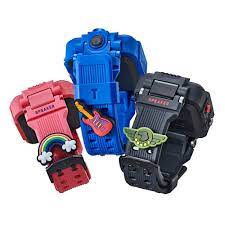When the CPU is not running, the data stored in RAM is erased. A hard disk can be used to store long-term data, but it will be erased when the computer is turned off. Likewise, an external storage device, such as a flash drive, can be used to store data, but the data will be erased when the device is powered off.
In the early 1990s, synchronous dynamic RAM (SDRAM) was introduced. The clock speed was synchronized with the speed of the CPU, and it allowed the computer to perform tasks faster. The memory could be used as a cache memory for the CPU.
Static RAM, or SRAM, is faster than DRAM, but is more expensive. It is made up of four to six transistors. The transistor serves as a gate. It controls whether the value of the capacitor can be read or written.
Throughout the history of the hard disk drive, there have been numerous technological advances. The most common size for a hard disk is a 3 1/2″, but 2.5″ drives are common for laptops.
Hard disks store data magnetically. The data is stored in logical blocks delimited by markers identifying the start and end of the blocks. These blocks are decoded by a Digital Signal Processor (DSP) which uses Reed-Solomon error correction and PRML.
The early hard disk drives wrote data at a constant bit rate. This resulted in the same amount of data per track. However, it also reduced the amount of space available to the operating system. This reduced the available capacity for error checking data.
The early HDDs also reserved certain sectors for spares. This is called the reserve pool. The reserve pool is not included in the calculation of the drive’s capacity.
The most modern hard drives have one or more heads for each magnetic platter surface. They can reach an acceleration of 550 g. This can cause head crashes, which can lead to data loss.
The physical components of an HDD create limitations, especially when they are used as a secondary storage device. However, HDDs are still reliable. In most cases, data is stored on the disk even when a computer is shut down.
Modern hard drives connect to a computer via a standard interface cable. These include Serial ATA (SATA) or USB. These interfaces allow for faster data transfer through higher signalling rates. They also reduce the size of the cable used.
The modern interface also connects the drive to a host interface with a single data/control cable. An additional power cable is also used.
Originally called magnetic core memory, solid state drives are an alternative to hard disk drives. They have less moving parts and are shock-resistant. They also have low power requirements and can lower your electric bill.
They are made up of several components, including a controller chip that manages the information on the host computer. They contain memory chips that contain millions of electrons in a specific order.
SSDs have come a long way since the early days of the first solid state drives. They are now able to offer tons of storage space at a fraction of the size of HDDs. These drives are now more reliable, shock-resistant, and faster.
SSDs come in three basic types of memory: single-level cells (SLC), multi-level cells (MLC), and triple-level cells (TLC). The single-level cell is the fastest, most durable, and least expensive SSD type. The other two memory types offer a slower write speed and lower capacity.
Pc GamingThey’re designed to be interchangeable with HDDs. They come in varying sizes, with the 2.5-inch model being the most common.
In the early days, the cost of a solid state drive was prohibitive. However, these devices have become more affordable over the years. They are now available in a wide range of sizes, configurations, and prices. These devices can also improve system cooling, make your computer more reliable, and save you time and money in the long run.
SSDs can be useful for high-throughput tasks. They offer better reliability and lower power consumption, which can lower your electric bill. They are also compatible with almost any device.
They’re also less likely to suffer data loss when your mobile device is dropped. Because they’re shock-resistant, they’re better suited for portable electronics.
Basically, a motherboard is the central backbone of a computer. It connects all the hardware parts of a computer and helps distribute power to all the devices. It also acts as a jack-of-all-trades for a computer, providing ports, sockets and connectors for various peripheral devices.
The motherboard is usually connected to a power supply and contains ports for peripheral devices. These devices may be attached to the motherboard using plug-in cards or cables. It also has a peripheral card slot to enable the insertion of expansion cards. It can also support other functions such as network cards and wireless network adapters.
The motherboard also has a clock generator, which synchronizes the computer’s operations. It also has a built-in temperature sensor, which monitors the CPU temperature. It also has a USB port, which allows the user to plug in and unplug compatible devices.
The motherboard also has a built-in Basic Input Output System (BIOS) software. The BIO is a small memory chip that stores instructions for the computer’s basic functions. It also controls the fan speed and other settings.
The motherboard also has an integrated disk drive controller, which controls the flow of information from the drive to the motherboard. It also has ports for other types of devices, including floppy disk drives and optical drives.
The motherboard also has a ROM memory, which stores the instructions for starting the computer. It also has a built-in microprocessor, which is the brain of the computer. The CPU processes software instructions and communicates with other parts of the computer.
A motherboard also has a special port for the power supply. A motherboard may also have ports for a number of peripheral devices, such as video cards, sound cards, fans and temperature sensors.



.jpg)

.jpg)
.jpg)
.jpg)



2 Comments
ReplyDeleteVisit here: OnShift Login
Visit here: OnShift Login
ReplyDeleteYou are welcome to share your ideas with us in comments.
Emoji